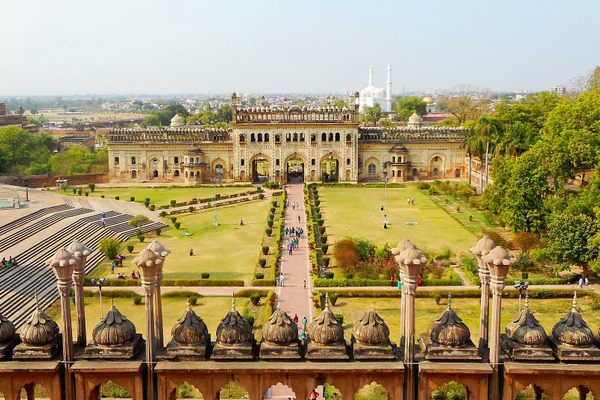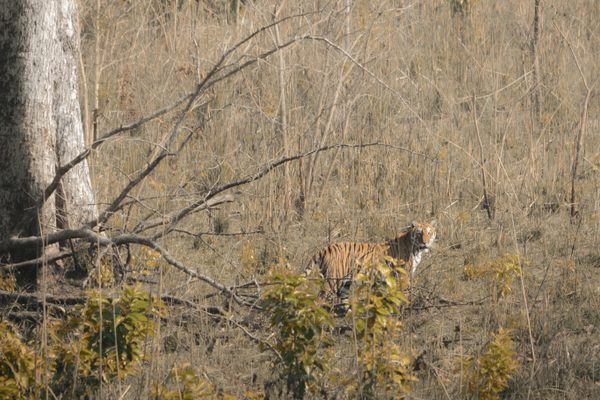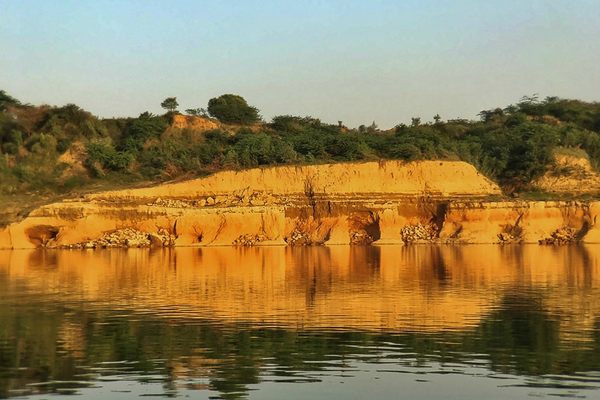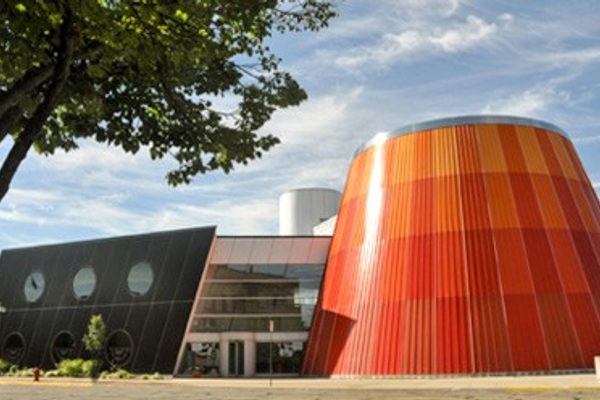Indira Gandhi Planetarium
Inside the dome of this gigantic, Saturn-shaped building is one of the largest planetariums in Asia.
Indira Gandhi Planetarium is tucked amidst anonymous concrete residential high rises, near the Gomti River that zigzags through downtown Lucknow, India. At first sight, the building seems to resemble an UFO that has crash landed on the way to the galaxy far far away—but as you look closer you’ll see it’s built in the shape of Saturn, surrounded by its distinguished rings.
The 21-meter (69-foot) diameter spherical building is one of the biggest planetariums in Asia. It is named for Indira Gandhi, the former Prime Minister of India, and opened to the public in 2003. Water surrounds the building and lights from below make it look like it is floating in space. When the planetarium first opened, their Japanese projector was the most advanced in the market. But now, the thick layer of the dust covering the machinery and the outdated desktop computer in the operator’s booth indicate that the operation is in need of an upgrade.
There is a small and informative exhibition on the planetarium’s ground floor. It shows a variety of dioramas, including one featuring NASA’s Mars Pathfinder mission, with a replica of the Sojourner rover that moves on a fake Martian surface. There are also models of Indian-built rockets and a figure of Rakesh Sharma, the first Indian astronaut, wearing a spacesuit. In addition to the main building, the planetarium also has three mobile units. They travel regularly to countryside schools and fairs with inflatable domes and projector to educate kids on the importance of the space exploration and science.
Know Before You Go
The planetarium is closed on Mondays. Show times are at 1 p.m., 2:30 p.m., 4 p.m., and 5 p.m., and shows last 30-45 minutes. The first shows on Saturday and Sunday are in English, all remaining shows on all days are in Hindi. Tickets are 25 rupees each.


















Follow us on Twitter to get the latest on the world's hidden wonders.
Like us on Facebook to get the latest on the world's hidden wonders.
Follow us on Twitter Like us on Facebook